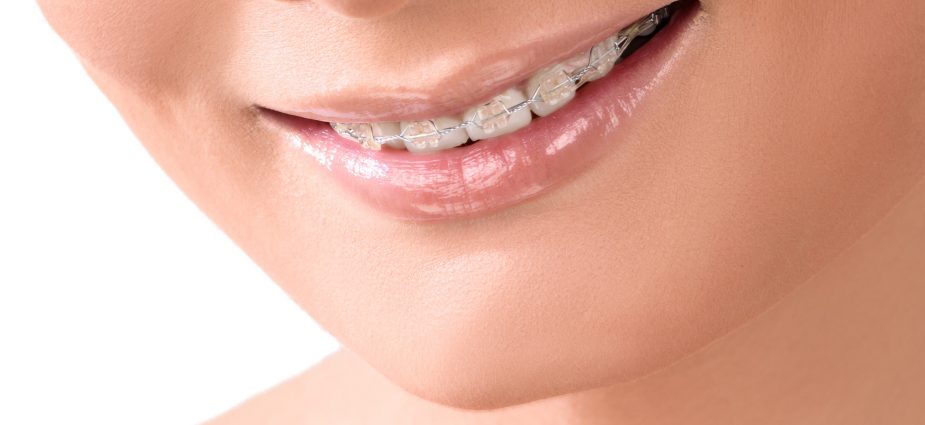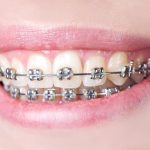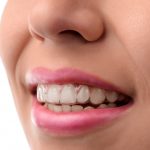Invisible Braces: A Clear Way to a Winning Smile
Medically Reviewed by: Gary Hirsh, DDS, MS

Straight teeth and a revitalized smile may no longer need to come from a mouth full of unattractive wire and bracket braces. Enhancing self-esteem and physical confidence, invisible braces offer an esthetic and barely visible alternative to conventional wire/bracket braces.
While invisible braces may not be suitable for certain misalignment cases or the complex bite problems that are better addressed by traditional orthodontics, invisible braces can be used to treat the following conditions:
- Overbite or overjet
- Crowded or widely spaced teeth
- Crooked teeth
Invisible braces are designed for adults and older teenagers but are not recommended when baby teeth remain. Children and younger teenagers faced with orthodontic problems will require traditional metal braces with brackets/wires on the front of the teeth. However, only your dentist or orthodontist can determine if you are a candidate. The alternative treatment was designed primarily for adults due to the need for absolute and rigid cooperation; the “trays” are worn 22 hours per day and should not be forgotten or lost.
Types
Popular types of invisible braces include ceramic brackets, inside braces and clear aligners. Ceramic braces are just like metal braces, except that they use tooth-colored brackets (and sometimes tooth-colored wires) rather than metal to straighten teeth. Generally non-staining, the tooth-colored ceramic “blends” with your teeth, making them less noticeable than metal, but not as “invisible” as inside braces or clear aligners. Inside braces — also called inside invisible braces, lingual braces or “iBraces” — and clear aligners go one step further, making treatment virtually invisible. Each alternative has its advantages and disadvantages.
“Ceramic, or “clear,” braces are made of composite materials that are weaker and more brittle than their metal counterpart. Ceramic brackets are larger than metal brackets and require small rubber bands, or ligatures, (or built in spring clips on “self-ligating” brackets) to hold them to the arch wire. Because the ligatures are white or clear, they can stain. However, staining is not a big problem because ligatures are changed every time you get an adjustment (generally monthly). The “self-ligatiing” clips do not require retying with wires or elastics.
Also, like metal braces, ceramic brackets are not removable until treatment is completed, can produce irritation and discomfort, and may complicate regular tooth care, eating and speaking.
Because they are not as strong as metal braces, clear braces require a longer treatment time, since your orthodontist may need to apply a slower, more gradual force to ensure the strength capabilities of the clear brackets are not overtaxed. Ceramic brackets also are usually more expensive than traditional metal brackets (about $500 more). As a cost-saving measure, some patients may opt to have ceramic braces placed only on the most visible teeth — typically the upper teeth or just the upper center teeth — while using traditional metal brackets on the remaining teeth that need straightening. Also, there is some possibility of tooth abrasion if the incisal edges of the upper front teeth touch the lower ceramic brackets.
Inside braces (including such brands as 3M’s Incognito Orthodontic Braces) are attached to the back of the teeth so they are hidden from view. Current iBraces use scanned images of the insides of the teeth to create special, computer-designed custom brackets that are attached to the insides of the upper and sometimes lower teeth. This makes them appeal to people who are often in public and might feel self-conscious about wearing clear aligners or braces with metal or ceramic brackets/wires on the front of their teeth. Whereas clear, removable aligners can be misplaced or lost, thereby delaying treatment, iBraces are fixed and not removable. Elastics can be used with iBraces to help hasten treatment. Such elastics are available for use with clear aligners but are more difficult to use.
Disadvantages of iBraces include a higher cost than traditional braces used on the front of the teeth due to the computer customization required to make the brackets. Since computer manufactured iBraces represent a newer technique, many orthodontists are not comfortable or experienced in performing invisible braces treatment and, therefore, shy away from offering them as a treatment plan. Speech, comfort, maintaining dental hygiene and removing dental plaque may pose challenges with iBraces.
Clear aligners (including such brands as Align Technologies’ Invisalign and ClearCorrect Inc.’s ClearCorrect) are a series of clear, removable aligners custom-fit to your teeth to provide virtually irritation-free treatment with minimal adjustment discomfort. Clear aligners are nearly invisible, minimally invasive and resistant to clouding from wear. With clear aligners, there are no brackets to come off or wires to break and poke. Clear aligners can be removed for eating, drinking and special events, making it easier to brush and floss.
(Also check out our articles on Invisalign Express & Invisalign Teen)
However, since clear aligners are removable, they may require more motivation and self-discipline to wear consistently, and they are easier to misplace or lose. Lost clear aligners may result in treatment delays and additional replacement costs. While fairly comfortable, clear aligners can cause discomfort or mild pain, particularly at the beginning when new aligners are placed and exert pressure on the teeth to move them. Additionally, clear aligners are available only from dentists or orthodontists that are manufacturer-certified and trained to offer them; they also may require special and costly maintenance. For example, Invisalign’s custom brand cleansers are available only from its manufacturer and are relatively expensive (around $50) compared to traditional cleansers used for orthodontic retainers.
Clear aligners are made after your dentist/orthodontist takes three-dimensional impressions of your teeth and sends them to a manufacturer-specific laboratory that fabricates your custom-fit clear aligners using computerized technology. These aligners are then sent to your dentist/orthodontist to be tried on and evaluated for suitability. Clear aligners are provided in sets. The number of aligners will depend on your specific orthodontic problem. You will wear each new aligner set for a specified amount of time, removing them only to eat, drink, brush and floss. With each new aligner set, your teeth slowly adjust and gradually realign to your desired smile. At periodic visits, your dentist/orthodontist will provide the next aligner set and evaluate your progress throughout treatment. Revision aligners are often requested at the end of the first series of aligners to correct any unfinished detailing.
Length of Treatment
The length of treatment depends on your situation and the type of invisible braces you are wearing. Typically, braces are worn from 18 to 24 months, though they are sometimes worn longer.
Metal braces work the best because they are made from the strongest materials. Ceramic braces, while strong and better looking, often take more time because they are not as strong as metal braces. Inside braces also can take more time to work effectively.
The treatment times with clear aligners vary. For example, Invisalign treatment, typically requiring 20 to 30 aligners for the upper and lower teeth, usually averages nine to 15 months to complete. ClearCorrect treatment times vary from 12 to 24 months and depends on the specific alignment problem; treatment for moderate cases requires 32 steps of treatment, delivered in eight phases, while minor cases require 12 steps of treatment, delivered in three phases.
Cost of Invisible Braces
The cost of invisible braces is about the same or higher than traditional orthodontic treatment, which ranges from $4,800 to $7,200. Your specific braces cost is determined by factors that include the type and duration of treatment, the dental professional, the location, your dental insurance and any other restorative work needed before or throughout treatment. Financing may be available through your dental insurance plan or your dentist’s office. Consult your dental insurance provider and dentist’s office to determine which orthodontic benefits you may qualify for.
About the Reviewer
Gary Hirsh, DDS, MS, of San Diego, Calif., is a board-certified orthodontist focusing on the latest procedures in orthodontics. He is a member of the American Association of Orthodontists, the California Dental Society and the Pacific Coast Society of Orthodontists. He is a past president of the Paul Revere Dental Club, The Neil Brahe Study Club and the San Diego Orthodontics Study Club.






